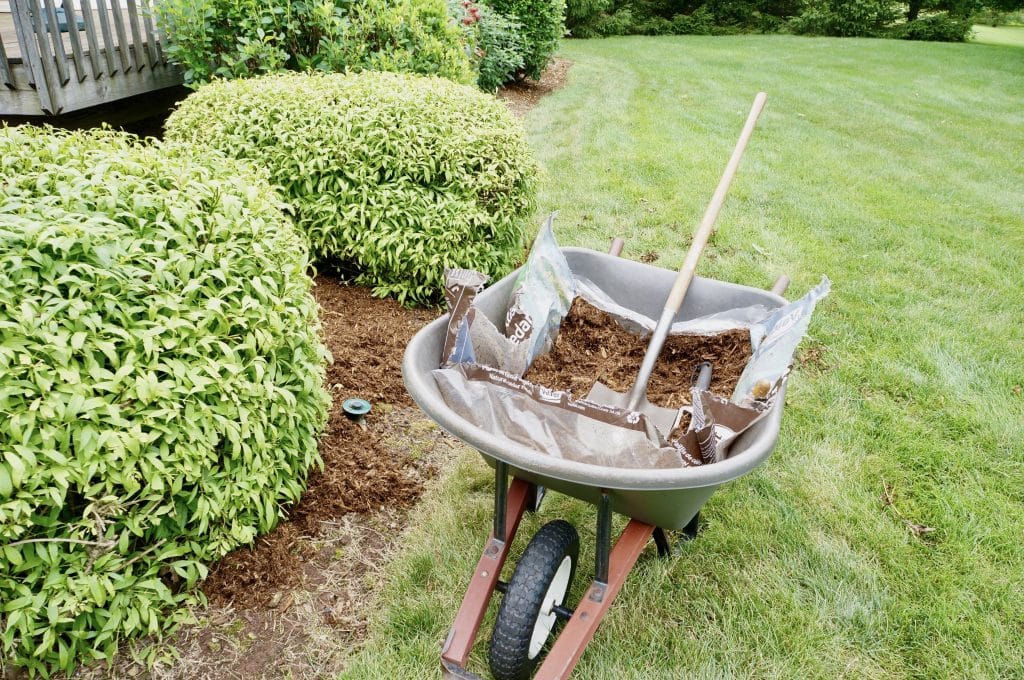Mulch is essential to any garden; you must use it correctly to get the most out of it. In this article, we will discuss the different types of mulch and how to use them properly. We will also provide tips on keeping your mulch in good condition throughout the year. So if you’re looking for tips on how to use mulch correctly, read on!
Contents
Different Kinds Of Mulch
There are many different kinds of mulch available on the market today. Some popular options include wood chips, bark, straw, and leaves. Each type of mulch has its benefits and drawbacks, so it’s essential to choose the right one for your needs.
Wood chips are an excellent choice for covering large areas quickly. They also break down slowly, making them ideal for long-term use. However, wood chips can be difficult to spread evenly and attract termites and other pests. Bark is another popular option for mulching, and it has many of the same benefits as wood chips. Bark is also slow to decompose, which makes it a good choice for areas that need long-term coverage. However, like wood chips, bark can be difficult to spread evenly and attract insects and pests.
Straw is a good choice for mulching gardens and flower beds. It breaks down quickly, providing nutrients to the soil as it decomposes. However, straw can blow away in strong winds and can also be a breeding ground for rodents and other pests. Leaves are an inexpensive way to mulch your garden, and they break down quickly to provide nutrients to the soil. However, leaves can blow away in strong winds and may need to be replaced more frequently than other types of mulch.
How To Pick The Right Mulch For Your Needs
Mulch is a protective layer of material placed over the soil to conserve moisture, improve fertility, and reduce weed growth. But with so many different mulch available, how do you know which one is right for your needs? Here are a few factors to consider when choosing a mulch:
First, think about what kind of plants you are trying to grow. If you are growing delicate plants that need constant moisture, you will want to choose a mulch that can help hold in moisture, such as straw or pine needles. If you are trying to control weeds in a particularly troublesome area, you might want to consider using a mulch that inhibits weed growth, such as black plastic or landscape fabric.
Next, consider how long you need the mulch to last. If you only need it for a short time, such as around annual flowers, then a biodegradable mulch, like wood chips or leaves, will work fine. If you need something that will last for several years, such as around trees or shrubs, you will want to choose a longer-lasting mulch like stones or shredded bark.
Finally, take into account the aesthetic appeal of the mulch. If you don’t mind the appearance of the mulch, then any material will do. If you want something that will complement your landscaping, choose a material that comes in various colors, like pebbles or dyed wood chips.
Tips For Using Mulch Correctly
It’s no secret that mulch can be a great addition to any garden. But if you want to get the most out of your mulch, you should keep a few things in mind. Here are some tips for using mulch correctly:
Calculate The Exact Amount You Need To Buy
Many gardeners use mulch to help conserve water, prevent weeds and keep their plants healthy. However, using too much or too little mulch can do more harm than good. So, how can you ensure you’re using the right mulch? The first step is to calculate the area you need to cover, which will help you determine how much mulch to buy. Next, take into account the type of mulch you’ll be using.
Some types, such as straw, break down quickly and must be replaced more often. Finally, consider the depth of the mulch layer. A general rule of thumb is to apply a 2-3 inch layer of mulch around your plants. By following these simple tips, you can be sure you’re using just the right amount of mulch in your garden.
Time Of Year Does Not Matter When Mulching
Mulch is a vital gardening tool that helps to insulate plants, regulate soil temperature, and prevent weed growth. However, many gardeners are unsure of when to apply mulch. Some believe mulching in the spring will protect plants from the summer heat, while others think that fall is the best time to apply mulch to protect against the cold winter weather.
In reality, there is no wrong time to mulch. You can apply mulch any time of year, and it will benefit you regardless of the season. So don’t wait for spring or fall – if your garden could use a little extra protection, go ahead and spread some mulch today.
Make Sure To Mulch Trees and Shrubs Correctly
Mulch is an essential tool for any gardener, but it’s important to use it correctly. Mulch helps regulate soil moisture levels, prevent weed growth, and insulate plants from extreme temperatures. However, if you apply too much mulch, it can damage plant life. When mulching trees and shrubs, leave a two-inch gap between the mulch and the trunk or stem, which will help to prevent rot and encourage proper airflow.
In addition, don’t overdo it on the thickness of the mulch layer. A three-inch layer is generally sufficient. Too much mulch can lead to suffocation of the roots and discourage new growth. By following these simple tips, you can make the most of your mulching efforts and keep your plants healthy and happy.
Use These Tips The Next Time You Mulch
In summary, when mulching your garden, be sure to:
- Calculate the exact amount of mulch you need to buy
- Take into account the type of mulch you’re using
- Apply a layer that is two to three inches deep
- Leave a gap between the mulch and the trunk or stem of trees and shrubs
- Don’t overdo it on the thickness of the mulch layer
By following these simple tips, you can be sure that you’re using mulch correctly and reaping all of its benefits. So don’t wait – get out there and start mulching today!




